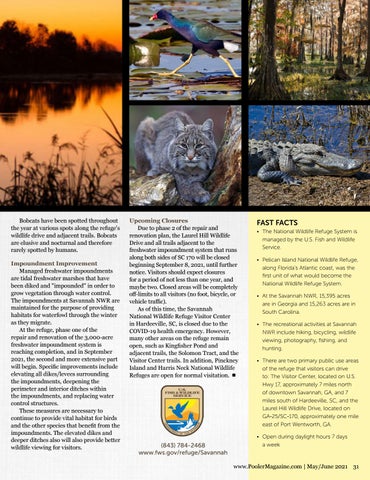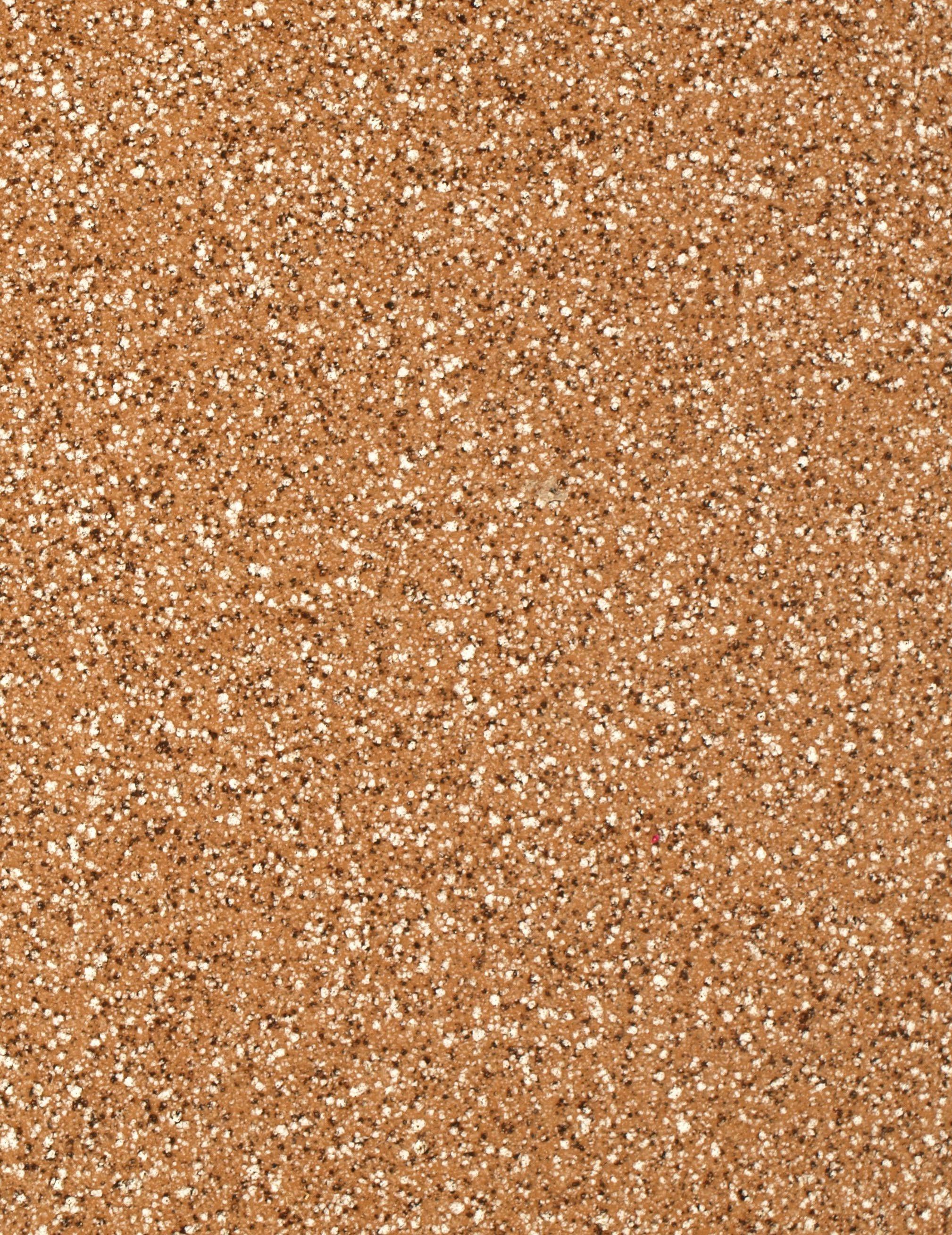Bobcats have been spotted throughout the year at various spots along the refuge's wildlife drive and adjacent trails. Bobcats are elusive and nocturnal and therefore rarely spotted by humans. Impoundment Improvement Managed freshwater impoundments are tidal freshwater marshes that have been diked and "impounded" in order to grow vegetation through water control. The impoundments at Savannah NWR are maintained for the purpose of providing habitats for waterfowl through the winter as they migrate. At the refuge, phase one of the repair and renovation of the 3,000-acre freshwater impoundment system is reaching completion, and in September 2021, the second and more extensive part will begin. Specific improvements include elevating all dikes/levees surrounding the impoundments, deepening the perimeter and interior ditches within the impoundments, and replacing water control structures. These measures are necessary to continue to provide vital habitat for birds and the other species that benefit from the impoundments. The elevated dikes and deeper ditches also will also provide better wildlife viewing for visitors.
Upcoming Closures Due to phase 2 of the repair and renovation plan, the Laurel Hill Wildlife Drive and all trails adjacent to the freshwater impoundment system that runs along both sides of SC 170 will be closed beginning September 8, 2021, until further notice. Visitors should expect closures for a period of not less than one year, and maybe two. Closed areas will be completely off-limits to all visitors (no foot, bicycle, or vehicle traffic). As of this time, the Savannah National Wildlife Refuge Visitor Center in Hardeeville, SC, is closed due to the COVID-19 health emergency. However, many other areas on the refuge remain open, such as Kingfisher Pond and adjacent trails, the Solomon Tract, and the Visitor Center trails. In addition, Pinckney Island and Harris Neck National Wildlife Refuges are open for normal visitation. n
(843) 784-2468 www.fws.gov/refuge/Savannah
FAST FACTS • The National Wildlife Refuge System is managed by the U.S. Fish and Wildlife Service. • Pelican Island National Wildlife Refuge, along Florida's Atlantic coast, was the first unit of what would become the National Wildlife Refuge System. • At the Savannah NWR, 15,395 acres are in Georgia and 15,263 acres are in South Carolina. • The recreational activities at Savannah NWR include hiking, bicycling, wildlife viewing, photography, fishing, and hunting. • There are two primary public use areas of the refuge that visitors can drive to: The Visitor Center, located on U.S. Hwy 17, approximately 7 miles north of downtown Savannah, GA, and 7 miles south of Hardeeville, SC, and the Laurel Hill Wildlife Drive, located on GA-25/SC-170, approximately one mile east of Port Wentworth, GA. • Open during daylight hours 7 days a week
www.PoolerMagazine.com | May/June 2021 31







